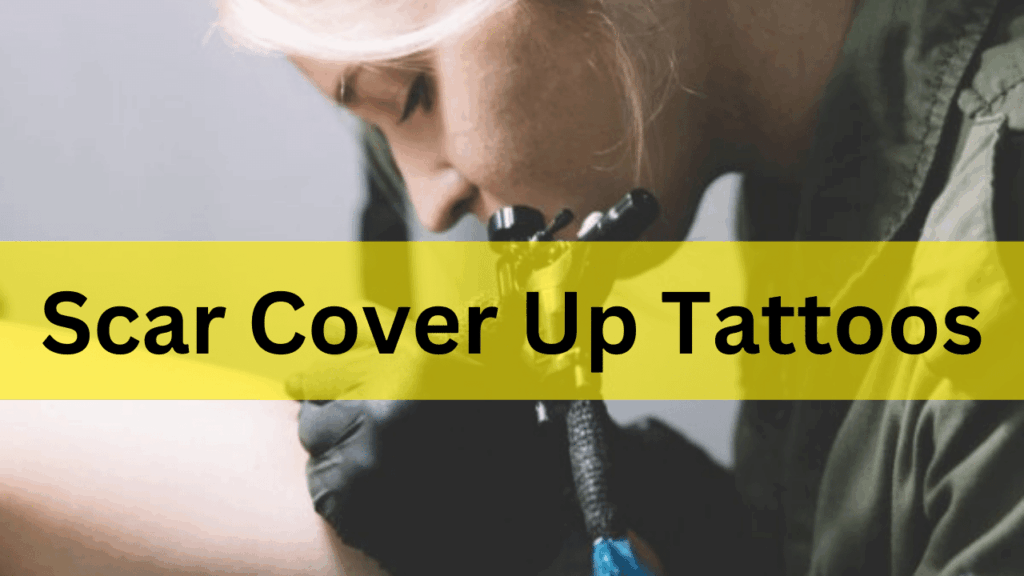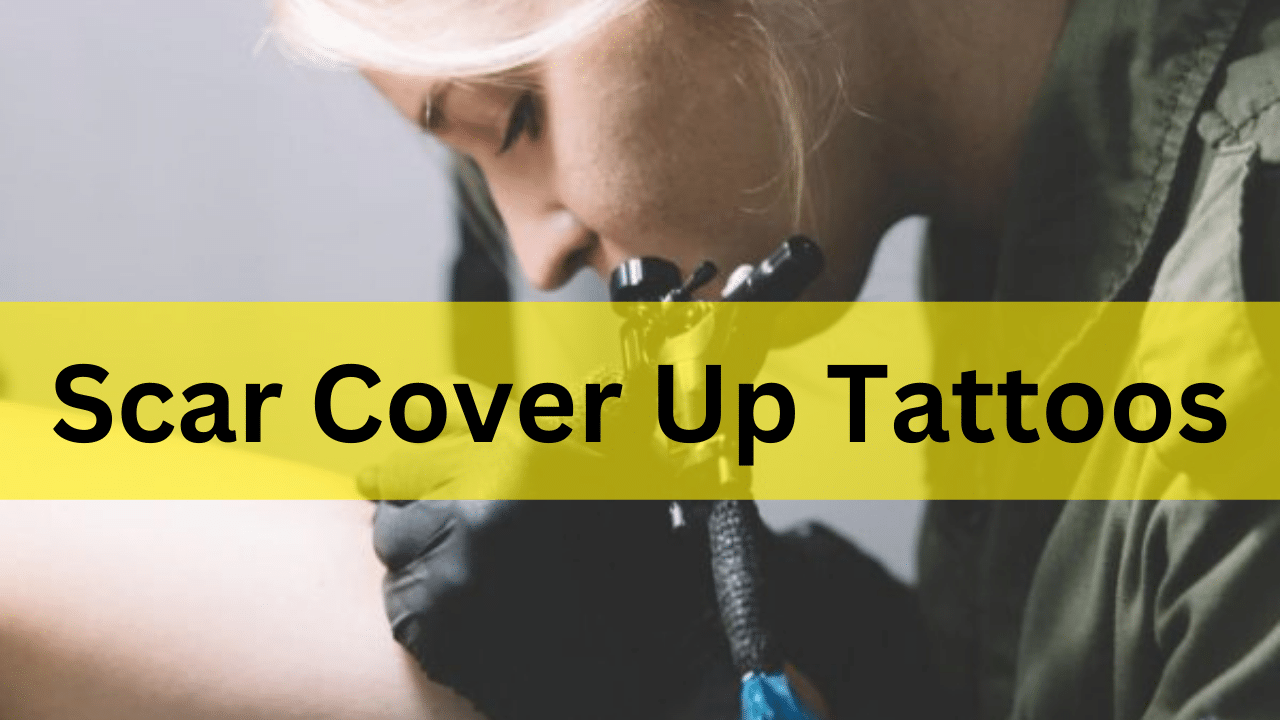
Artistic Scar Cover-Up: Transforming Trauma into Triumph Through Tattoo Art
Scars, often more than just skin deep, can carry emotional weight, serving as constant reminders of past traumas, surgeries, or accidents. While some embrace their scars as badges of honor, others seek ways to reclaim their bodies and narratives. One increasingly popular and powerful method is the artistic scar cover-up, utilizing the skill and creativity of tattoo artists to transform unwanted reminders into beautiful, empowering works of art. This article explores the world of artistic scar cover-ups, delving into the techniques, considerations, and emotional impact of this transformative practice.
Understanding Scar Tissue and Tattooing
Before embarking on a scar cover-up journey, it’s crucial to understand the nature of scar tissue and how it interacts with tattoo ink. Scar tissue differs significantly from healthy skin. It’s composed of collagen fibers arranged in a haphazard manner, leading to variations in texture, thickness, and sensitivity. This means that tattooing over scar tissue requires a skilled and experienced artist who understands how to work with these unique challenges.
Different types of scars respond differently to tattooing. Keloid scars, for example, are raised and thickened, often extending beyond the original wound boundaries. These types of scars are generally not suitable for tattooing due to the risk of further irritation and growth. Hypertrophic scars, which are also raised but remain within the original wound area, may be tattooable but require careful assessment. Flat, faded scars typically offer the best canvas for artistic scar cover-ups.
Consultation is Key
The first step in the scar cover-up process is a thorough consultation with a qualified tattoo artist. During this consultation, the artist will assess the scar’s type, size, location, and overall condition. They will also discuss your goals and expectations for the cover-up, considering your preferences for design, color, and style. A reputable artist will be honest about the limitations of tattooing over scar tissue and will only proceed if they believe a successful and aesthetically pleasing result is achievable. They will also provide aftercare instructions to minimize risks and promote proper healing. Choosing a tattoo artist with extensive experience in scar cover-ups is paramount to a successful outcome.
The Art of Disguise: Design Considerations
Choosing the right design is crucial for a successful artistic scar cover-up. The design should not only be aesthetically pleasing but also strategically chosen to camouflage or distract from the underlying scar tissue. Certain patterns and textures are more effective at concealing scars than others. For example, designs with intricate details, shading, and movement can help to break up the visual lines of the scar and blend it into the overall artwork. Darker colors tend to be more effective at covering scars than lighter colors, although this depends on the scar’s color and the desired aesthetic.
The placement of the tattoo is also an important consideration. The artist will work with the natural contours of the body and the shape of the scar to create a design that flows seamlessly and integrates the scar into the overall composition. Sometimes, the scar itself can even be incorporated into the design, turning a perceived flaw into a unique and meaningful element. An artistic scar cover-up is not simply about hiding the scar; it’s about transforming it into something beautiful and empowering.
Popular Design Choices for Scar Cover-Ups
- Floral Designs: Flowers, with their intricate details and organic shapes, are a popular choice for covering scars. Roses, lilies, and peonies are commonly used to create visually stunning and feminine designs.
- Geometric Patterns: Geometric patterns, such as mandalas and tribal designs, can effectively camouflage scars with their repeating shapes and bold lines.
- Abstract Art: Abstract designs offer a unique and creative way to cover scars, allowing for a more personalized and expressive approach.
- Nature Scenes: Landscapes, forests, and underwater scenes can be used to create visually appealing and meaningful cover-ups.
- Animal Motifs: Animals, such as birds, butterflies, and wolves, can be incorporated into scar cover-up designs to represent strength, freedom, and transformation.
The Emotional Impact of Scar Cover-Ups
Beyond the aesthetic benefits, artistic scar cover-ups can have a profound emotional impact on individuals. Scars can be constant reminders of traumatic experiences, leading to feelings of self-consciousness, anxiety, and even depression. By transforming these scars into beautiful works of art, individuals can reclaim their bodies and narratives, fostering a sense of empowerment and self-acceptance.
The process of getting a scar cover-up can be a cathartic experience, allowing individuals to confront their past traumas and move forward with a renewed sense of confidence. Many people describe feeling a sense of liberation and relief after getting a cover-up, as if a weight has been lifted off their shoulders. The tattoo becomes a symbol of resilience and strength, representing their ability to overcome adversity. An artistic scar cover-up is more than just a tattoo; it’s a powerful act of self-care and self-expression.
Testimonials and Success Stories
Countless individuals have shared their positive experiences with artistic scar cover-ups, highlighting the transformative impact on their lives. Many describe feeling more comfortable in their own skin, more confident in social situations, and more empowered to embrace their bodies. These stories serve as a testament to the healing power of art and the ability of tattoos to transform not only the physical appearance but also the emotional well-being of individuals.
Finding a Qualified Artist and Ensuring Safety
Choosing a qualified and experienced tattoo artist is crucial for a successful and safe scar cover-up. Look for an artist who specializes in scar cover-ups and has a portfolio of successful transformations. Ask to see before-and-after photos of their work and read reviews from previous clients. A reputable artist will be knowledgeable about scar tissue and will be able to assess the scar’s suitability for tattooing. They will also prioritize safety and hygiene, using sterile equipment and following proper tattooing procedures.
Before getting a scar cover-up, it’s essential to ensure that the scar is fully healed. Tattooing over a scar that is still healing can increase the risk of complications, such as infection and keloid formation. Consult with a dermatologist or plastic surgeon if you have any concerns about the scar’s healing process. Also, inform your tattoo artist about any medical conditions or allergies you may have, as these could affect the tattooing process or healing. Proper aftercare is essential for preventing infection and promoting optimal healing. Follow your artist’s instructions carefully, keeping the tattoo clean and moisturized. Avoid exposing the tattoo to direct sunlight or excessive moisture during the healing process.
An artistic scar cover-up is an investment in your well-being and self-esteem. By choosing a skilled artist, selecting a meaningful design, and following proper aftercare procedures, you can transform your scar into a beautiful and empowering work of art. The process is not just about covering up a scar; it’s about reclaiming your body, your narrative, and your sense of self.
The Future of Scar Cover-Ups
As awareness of the emotional and aesthetic benefits of artistic scar cover-ups grows, the practice is likely to become even more widespread and sophisticated. Advances in tattoo technology and techniques are constantly emerging, allowing artists to create even more intricate and realistic designs. The increasing availability of specialized training programs for tattoo artists focusing on scar cover-ups will further enhance the quality and safety of the procedure.
Furthermore, the growing acceptance of tattoos in mainstream society is helping to reduce the stigma associated with body modification, making artistic scar cover-ups a more accessible and appealing option for individuals seeking to reclaim their bodies and narratives. The future of scar cover-ups is bright, offering hope and empowerment to those seeking to transform their scars into symbols of strength and resilience. [See also: Tattoo Aftercare: A Comprehensive Guide] [See also: The Psychology of Tattoos: Exploring Motivations and Meanings]
In conclusion, the artistic scar cover-up is a powerful tool for transforming trauma into triumph. By carefully considering the scar’s characteristics, choosing a skilled artist, and selecting a meaningful design, individuals can reclaim their bodies and narratives, fostering a sense of empowerment and self-acceptance. It is a testament to the transformative power of art and the resilience of the human spirit, turning reminders of the past into symbols of strength and hope. The artistic scar cover-up is more than just a tattoo; it’s a journey of healing, self-discovery, and ultimately, self-love.

